Seki Kanetsune
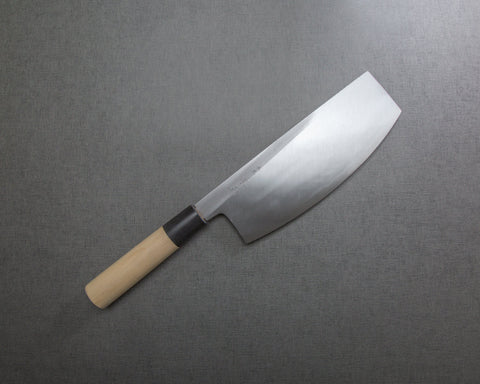
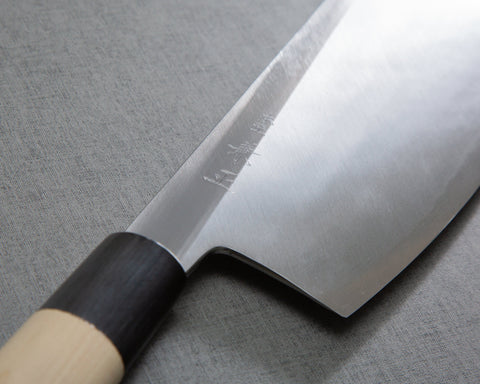
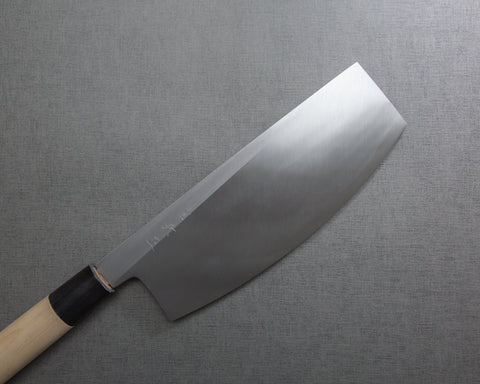
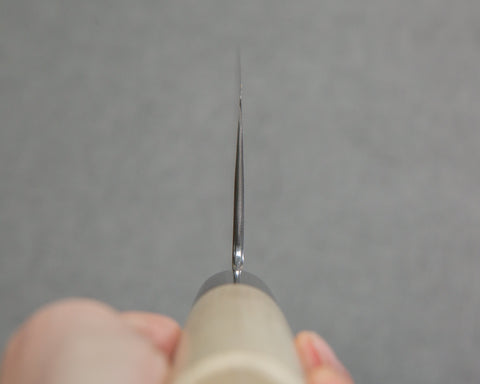
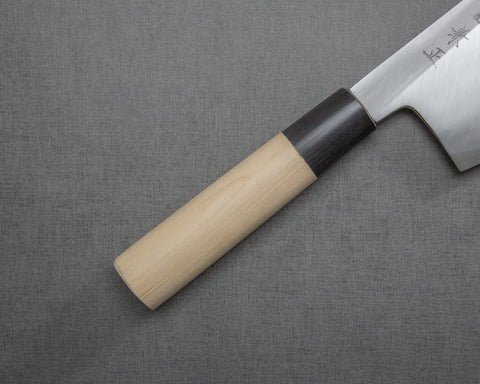
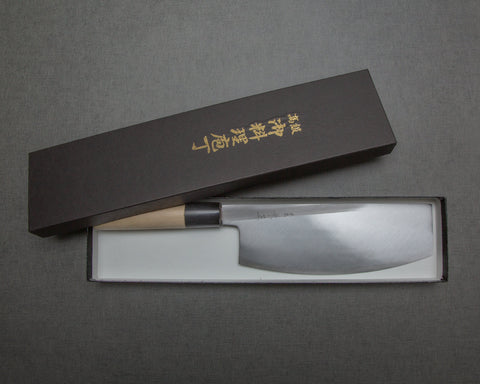
Honsho Kanemasa "G Series" Shirogami #3 240mm Sushikiri
Pickup currently unavailable
The half-circle-shaped blade of Sushikiri allows you to cut futomaki rolls into smaller pieces without crushing the rice and ingredients. Not to be confused with Sashimi knives, the Sushikiri is a specialty knife designed to cut futomaki rolls of Kansai area (e.g. Osaka). This Sushikiri in the “G Series” is hand-forged with Shirogami #3 steel, heat-treated to 60-61 HRC and a Kasumi finish is added to the grind. The blade is paired with a Marugata (Oval-shaped) handle made of Japanese Magnolia wood and a Buffalo Horn Kuchiwa.
Spec:
- Origin (Made in): Seki, Gifu Prefecture, Japan
- Brand: Honsho Kanemasa (part of Kanetsune Seki)
- Model No.: G-60
- Knife Type: Sushikiri
- Blade
- Construction: Monosteel
- Grind: Double-edged Blade (50/50 Grind)
- Steel Type: Shirogami #3 (White #3)
- Hardness: 60-61 HRC
- Hand-forged, hand-grinded, hand-sharpened
- Blade Finishes: Kasumi Polish
- Blade Length: 240mm (9.4")
- Blade Height (at heel / middle): 68mm
- Spine Thickness
- Above heel: 3.7mm
- Middle: 3.0mm
- Handle
- Shape: Marugata (Oval-shaped)
- Material: Japanese Magnolia (Ho Wood)
- Kuchiwa: Buffalo Horn
- Length: 144mm
- Overall Length: 387mm
- Weight: 385g (13.58oz)
- Hand Chiseled Mark: In Japanese Kanji "Honsho Kanemasa" (本匠兼正)
About Kanetsune Seki 関兼常 / Kitasho 北正
The owner of Kanetsune Seki brand — Kitasho — has been making knives in pre-war Japan, in Seki City (関市) which has over 800 years of blade-making history. After the war, they established the Kitamura Shoten, which led to the current Kitasho company. The Kanetsune (兼常) brand is named after a famous sword-smith who lived in the Muromachi period around 14-15 century. Making different series of knives under brands including Kanemasa (兼正作), Honsho Kanemasa (本匠兼正作), and Minamoto Kanemasa (源兼正), Kitasho Company is on the mission of passing down Seki’s 8 centuries long knife-making techniques and traditions.
Care:
Shirogami #3 (white #3) steel is one of the popular types of high carbon steel found in Japanese kitchen knives (Wa Knives). It is not stainless, therefore you must wipe your knife dry after each use. Patina will develop over time. Rust may develop if left in prolonged contact with water or acidic food. Use a rust eraser to clean if rusts develop. Avoid cutting into bones, frozen foods, hard fruit pits.
Cutting Surface:
Recommended cutting surface: wood, rubberized boards and high-end composites, and quality plastics such as polyethene make acceptable cutting surfaces, and will help protect and prolong knife’s edge. AVOID glass, metal, countertops, and other rigid, non-forgiving surfaces.
Sharpening:
We recommend sharpening all quality Japanese knives on whetstones, as we believe they yield the best results for your knives.
Free Shipping
Free Shipping on most orders.
30 Days Return
Return unused within 30 days for a full refund, no questions asked (terms apply).
Top Japanese Makers
All knives made in Japan by top Japanese knife makers.
About
Burrfection Store sources professionally designed sharpening products, and knives from top Japanese craftsmen.
